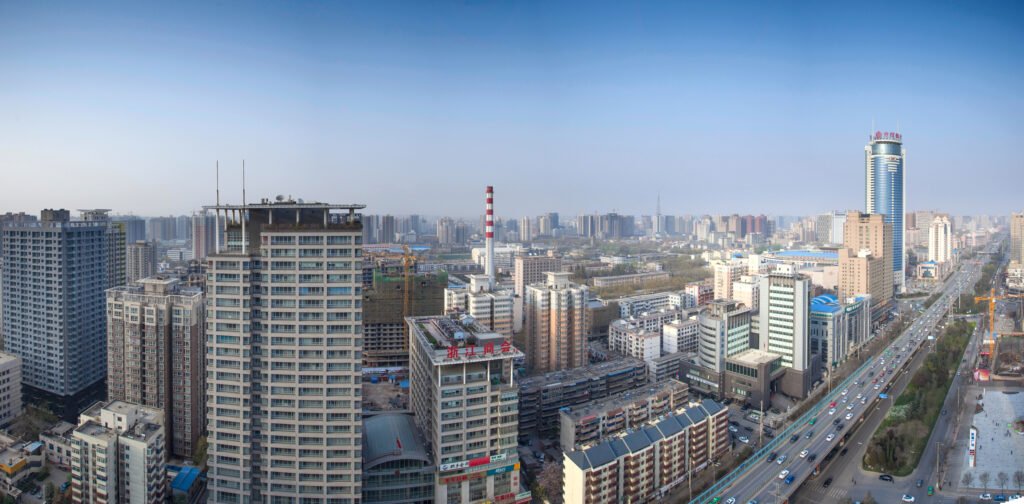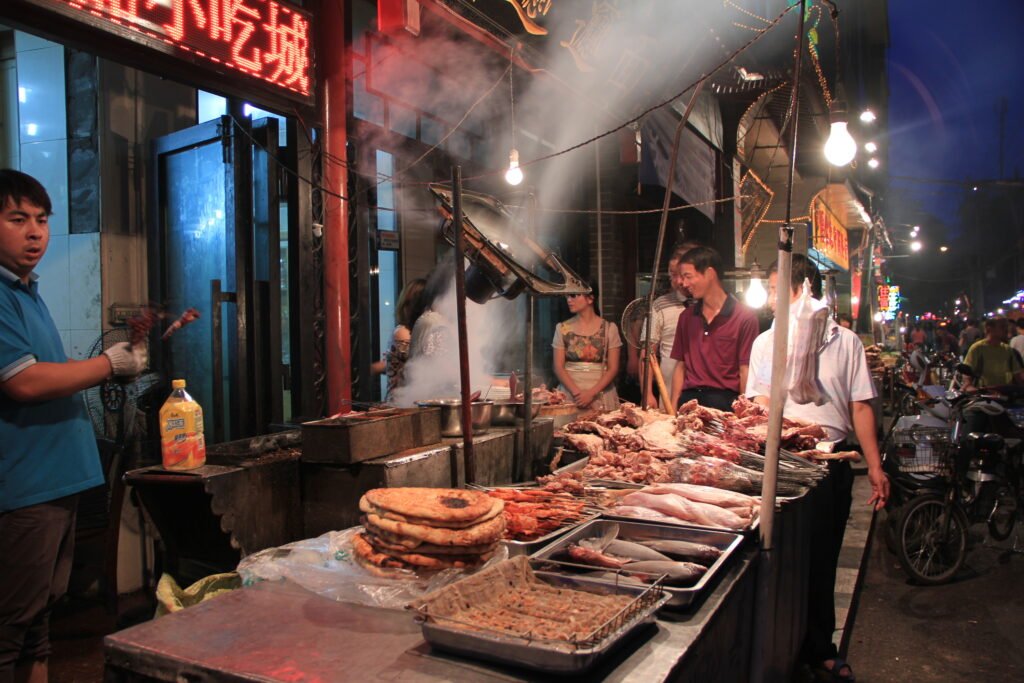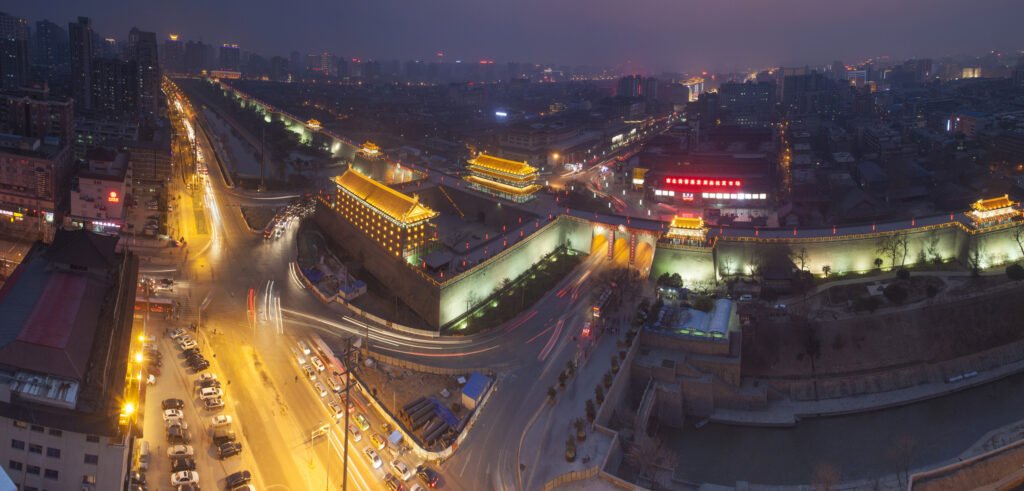
Nestled in the heart of China, Xi’an, the ancient capital of thirteen dynasties, offers a culinary journey as rich and layered as its historical narrative. This city, once the starting point of the Silk Road, has blossomed into a captivating food destination, offering a unique blend of hearty flavors, rustic traditions, and vibrant street food scenes. Let’s embark on a journey to discover why Xi’an deserves its place among China’s top culinary locations, delve into its rich history, and uncover the unforgettable gastronomic adventures that await within its ancient walls.
Why Xi’an Ranks Among China’s Best Culinary Locations
- Centuries of Imperial Influence: As the capital for over 1,000 years, Xi’an’s cuisine has been shaped by the tastes of emperors and their courts, resulting in dishes that are both refined and luxurious.
- Silk Road Heritage: Xi’an’s position on the Silk Road introduced a wealth of new ingredients and culinary techniques to the region, influencing its flavors with Middle Eastern, Central Asian, and Indian influences.
- Wheat-Based Dominance: As a northern city, Xi’an’s gastronomy relies heavily on wheat, giving rise to a vast repertoire of flavorful noodles, dumplings, and steamed buns.
- Lamb and Beef Abundance: Thanks to its connection to nomadic cultures, Xi’an’s cuisine features prominent use of lamb and beef, often prepared with bold spices and hearty cooking methods.
- Muslim Quarter Delights: Xi’an’s vibrant Muslim Quarter is a treasure trove of street food, showcasing the unique flavors and traditions of the local Hui community.
- Distinct Regional Flavors: While part of China, Xi’an’s cuisine boasts distinct flavors, with dishes that highlight local ingredients and unique cooking styles.
- Unique Local Specialties: Rou jia mo, Biang Biang noodles, and lamb paomo are only a few signature dishes that have propelled Xi’an into one of China’s great culinary locations.

Culinary Adventures in Xi’an: A Guide for Food Lovers
To fully appreciate the delicious dishes in Xi’an, dive into its cultural and historic context, and you’re sure to have fun exploring a new world of food. Here are some culinary adventures to try:
- Muslim Quarter Street Food Crawl: Immerse yourself in the bustling atmosphere of the Muslim Quarter, sampling local street food favorites like rou jia mo, yang rou pao mo, and various grilled skewers. Be sure to try the local persimmon cakes (shizi bing) for a sweet treat.
- Noodle Making Class: Engage with a local noodle maker and learn the secrets of how to make the perfect Chinese noodle. Take a crack at pulling the iconic Biang Biang noodles and other local favorites.
- Dumpling Banquet Delight: Experience a traditional dumpling banquet, a multi-course meal featuring a dazzling array of dumplings with different fillings, shapes, and cooking methods.
- Tang Dynasty Dinner Show: Take a glimpse into the imperial kitchen during the Tang Dynasty by attending a dinner show featuring traditional music, dance, and cuisine. This cultural experience provides a unique insight into Xi’an’s rich history.
- Visit a Tang Dynasty Village: Experience what life was like as a citizen in the ancient Tang Dynasty. The local area boasts food and desserts that were common to the culture at the time.
- Shaanxi Gourmet Experience at a Local Family: Try local delicacies with a local family for a unique experience that cannot be duplicated anywhere else!
A Taste of History: Unveiling Xi’an’s Culinary Evolution
Xi’an’s culinary history is as rich and complex as its imperial past. The city’s food culture has been shaped by centuries of political power, Silk Road trade, and cultural exchange.
- The Qin Dynasty (221-206 BCE): As the capital of the Qin Dynasty, Xi’an (then known as Xianyang) became a center of power and culinary innovation. Archeological evidence suggests that the Qin already enjoyed a diverse diet, including grains, meats, and vegetables.
- The Han Dynasty (206 BCE-220 CE): The Han Dynasty saw the Silk Road open, bringing new ingredients and culinary techniques to Xi’an (then known as Chang’an). Spices from Central Asia and the Middle East began to appear in local dishes, adding new dimensions of flavor.
- The Tang Dynasty (618-907 CE): The Tang Dynasty is considered the golden age of Chinese civilization, and Xi’an (then Chang’an) was its magnificent capital. The city became a melting pot of cultures, attracting merchants, artists, and scholars from around the world. This cultural exchange had a profound impact on Xi’an’s cuisine, resulting in a sophisticated and cosmopolitan food scene.
- Muslim Influence: Starting with the Silk Road and the Mongolian Yuan Dynasty, the city became home to many muslims and halal food has been a mainstay since.
- Modern Era: In recent decades, Xi’an has experienced a culinary renaissance. While maintaining deep respect for traditional flavors and techniques, the city’s chefs have been innovating and elevating Shaanxi cuisine to new heights. This blend of tradition and innovation has solidified Xi’an’s status as a top destination for food lovers from around the globe.
10 Iconic Recipes from Xi’an

- Rou Jia Mo (肉夹馍): Often called the “Chinese hamburger,” rou jia mo features tender, shredded pork that has been braised in a flavorful broth for hours, stuffed into a freshly baked flatbread bun.
- Biang Biang Noodles (油泼面): These thick, hand-pulled noodles are a local specialty, known for their wide, ribbon-like shape and their complex name, which is written with a character composed of 58 strokes.
- Yang Rou Pao Mo (羊肉泡馍): A hearty lamb soup featuring chunks of bread that have been torn into small pieces and simmered in a rich, savory broth.
- Hui Style Dumplings (饺子): These unique dumplings of the muslims is a local favorite.
- Jing Gao Rou: These pork ribs have been cooked in soy sauce and is a sweet and savory pork dish.
- Persimmon Cakes (柿子饼): Also known as Shizi Bing, these are locally made and a popular street snack.
- Tang Dynasty Dessert Pastries In historical reproductions of the Tang Dynasty, sample what ingredients and recipes made this time period great.
- Hu Spicy Soup: This lamb-and-beef stew has a thick texture with a strong spicy, sour profile.
- Mirror Cake: This is a glutinous rice cake dish often found in the Muslim Quarter and is enjoyed for its chewy texture and smooth, sweet taste.
- Bingfeng Soda: In contrast to the stronger alcohol, try a popular soda from Shaanxi that offers a sweeter taste.
Xi’an’s culinary scene is a testament to the city’s rich history, innovative spirit, and access to exceptional local ingredients. From humble street food stalls to imperial dining halls, Xi’an offers a gastronomic journey that captivates food lovers from around the globe.
As you wander through its ancient walls and bustling markets, you’ll discover that in Xi’an, food is not just sustenance – it’s a way of life, a celebration of flavor, and a gateway to understanding the heart and soul of Chinese culture. Whether you’re savoring a perfectly prepared rou jia mo, slurping flavorful Biang Biang noodles, or exploring the bustling Muslim Quarter, Xi’an promises an unforgettable culinary adventure.
The city’s ability to honor its culinary traditions while embracing innovation ensures that Xi’an will continue to be a top destination for food enthusiasts for years to come. With its unique blend of Silk Road heritage, imperial influences, and regional specialties, Xi’an offers a feast for all the senses, making it a must-visit destination for anyone seeking to experience the true depth and diversity of Chinese cuisine.
When planning your trip, be sure to sample some of the fresh fruits offered in Xi’an’s local markets, which include persimmons, pomegranates, and apples, each of which is tied to the history of Xi’an in some way.
The cuisine found in Xi’an is truly a can’t-miss experience!


